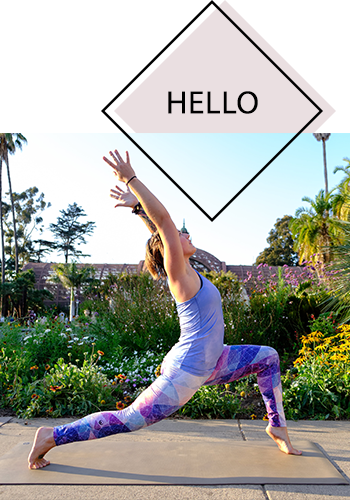How to Do a Headstand (And Learn to Overcome Your Aversion to Inversions)
/
Not only are you working on overcoming gravity, but inversions can also bring up fear, a gripping in the mind. I find it helpful to remember that there are many stopping points along the way into headstand where you can pause. Listen to your body.
Where are you today in the pose?
It doesn't make you any less of a yogi to stay in position 1, your head cradled in your hands. You aren't considered more successful by finding the full expression of the pose.
Remember this sense of patient awareness as you approach headstand.
Start seated on your feet. Cross the arms, pressing your palms into the shoulders. Lean your elbows forward onto the ground, and open the forearms shoulder-width. Cradle the head in your hands, scooting your head forward, your hands like a retaining wall.
Place the crown of your head on the floor (anywhere between the top of your head all the way forward to the hairline). Unshrug the shoulders, pushing them up toward the ceiling. Be sure to keep them away from the ears, strong and engaged throughout the pose.
Next, push your hips into the air, as if you were doing downward facing dog pose. Come onto the tiptoes, walking your feet forward. Continue tiptoeing your feet toward your face until your hips are above your head.
You may need to bend your knees if your hamstrings are tight. Generally the feet end up about 6 inches from your face, closer than what you see in the photo above.
If you're just beginning to work on headstand, feel free to stay here as you build strength in your neck and shoulders.
The next step is to lift the feet off the ground, using core strength to bring them together. Bend the knees and bring them in toward your chest. Tighten the legs, squeezing the knees together.
Again, unshrug the shoulders. As you find stability and balance, begin to bring the knees in line with the hips horizontally, then slowly and carefully bring the knees above the hips.
Keep your gaze focused on one spot as you bring the feet all the way up. Reach the balls of your feet toward the ceiling. One trick you can use for additional stability is to push your chin slightly toward the floor, which straightens the spine a bit.
Again, press down firmly into the shoulders and forearms.
To come out, reverse the steps, moving through each stopping point. After your headstand, be sure to rest on the floor in child's pose.
Enjoy the way the pose empowers you to see the world differently. Enjoy the calm, steady feeling afterward. Namaste!












